7 Lush Leafy Plants Slugs And Snails Won’t Touch – For A Gorgeous Pest-Proof Garden
Tired of slugs and snails devouring your prized plants? Discover the verdant varieties that these pests avoid, and keep your garden vibrant and damage-free.
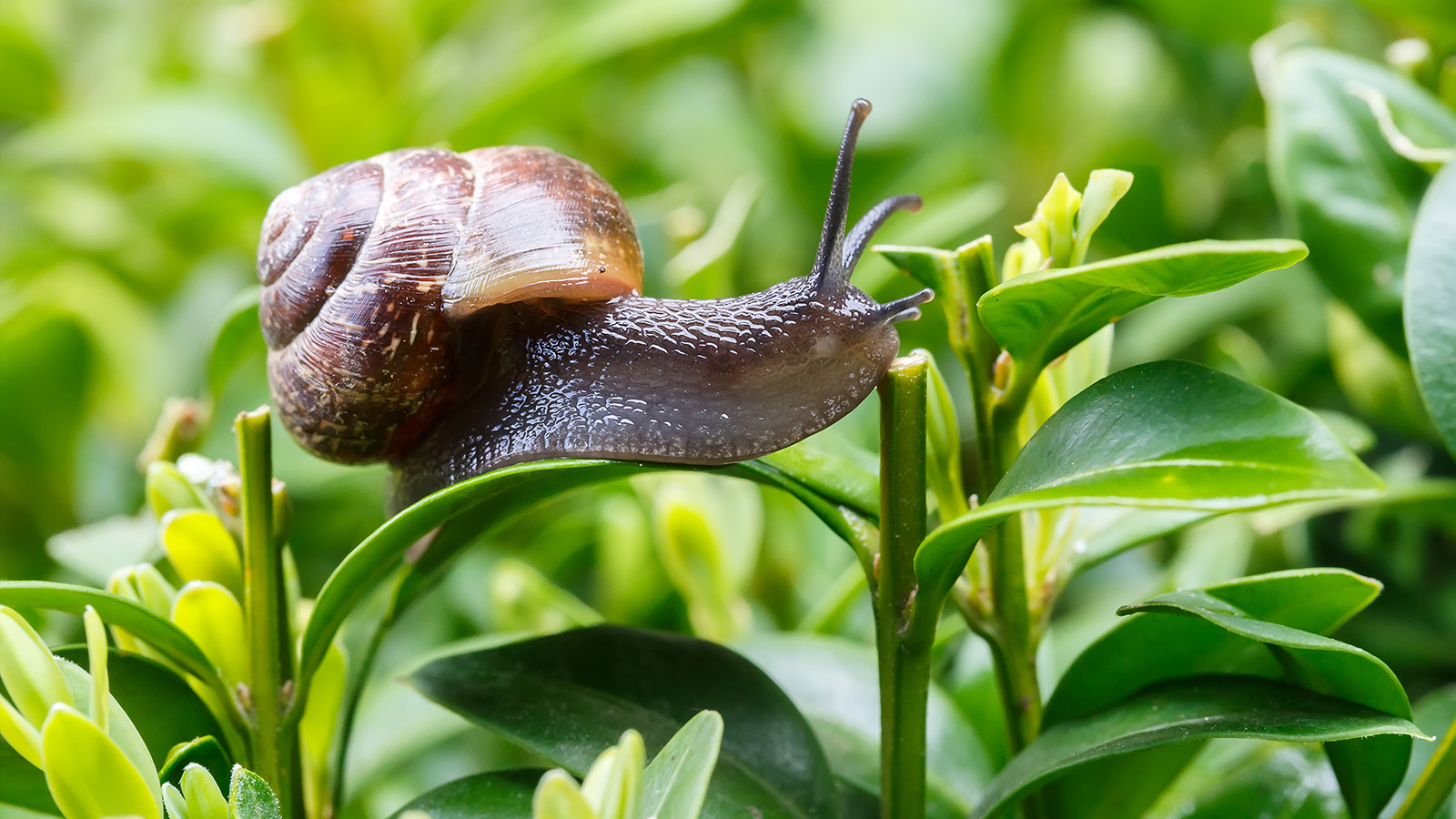

Slugs and snails seem to be an inevitable part of the garden. They do have an important purpose, breaking down plant matter, but when they start chewing our favorite plants' leaves, enough is enough.
You can control slugs and snails to a degree by removing debris piles and keeping garden areas open and exposed to light. But at night, these mollusks creep out from whatever moist, dark location they were hiding in during the day, and start their buffet.
Slugs and snails enjoy a host of plants, more than can be counted. They especially like tender new leaves and buds.
You can get up very early and hand-pick them, make a slug trap, or lay bait, but they will still find their way to their favorite food sources.
One way to beat them is to plant slug and snail-resistant plants. Plants with a strong scent like herbs and alliums, or those with spiky or roughly textured leaves seem to be off the menu.
There are also some beautiful plants with larger, lusher leaves and interesting forms that will not be part of the mollusks' dinner…
1. Lady’s Mantle
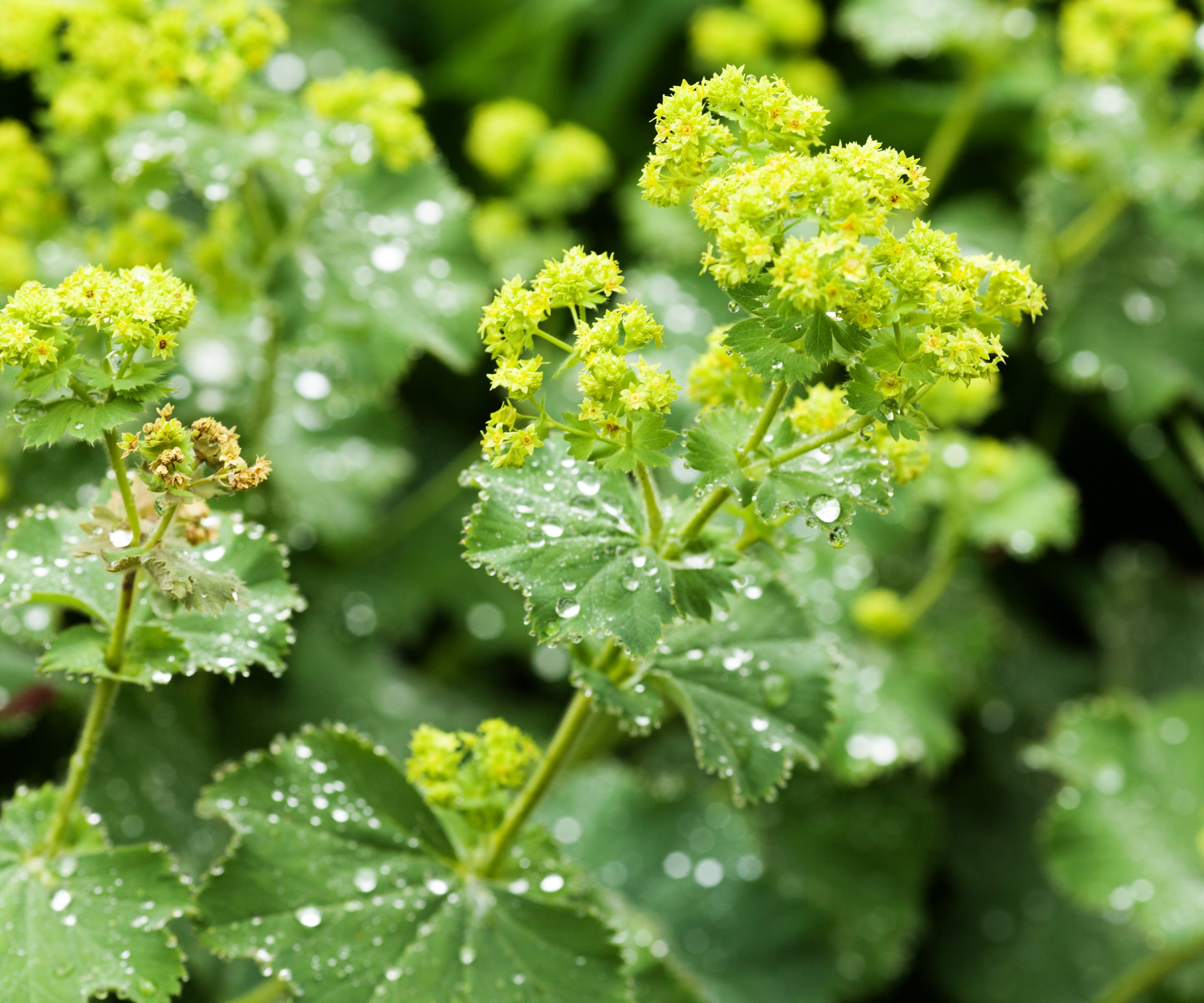
Lady’s mantle (Alchemilla mollis) is in the rose family, a group of plants that slugs also do not enjoy. This soft-leaved plant produces interesting sprays of chartreuse flowers and its leaves are velvety with soft hairs that catch the morning dew. The foliage has 7-11 pleated lobes with softly serrated edges.
Gardening tips, videos, info and more delivered right to your inbox!
Sign up for the Gardening Know How newsletter today and receive a free copy of our e-book "How to Grow Delicious Tomatoes".
An adaptable perennial, lady's mantle can be planted in either full sun or partial shade, though it does need consistent moisture. It forms a mounded shape that is very appealing alongside other perennial species.
Lady’s mantle is hardy to USDA zones 3-8 but it can become invasive if allowed to set seed. Cut off the flowers if you wish to keep this lovely foliage plant in check.
In addition to being uninteresting to slugs and snails, it is also resistant to deer and most other pests.
2. Peonies
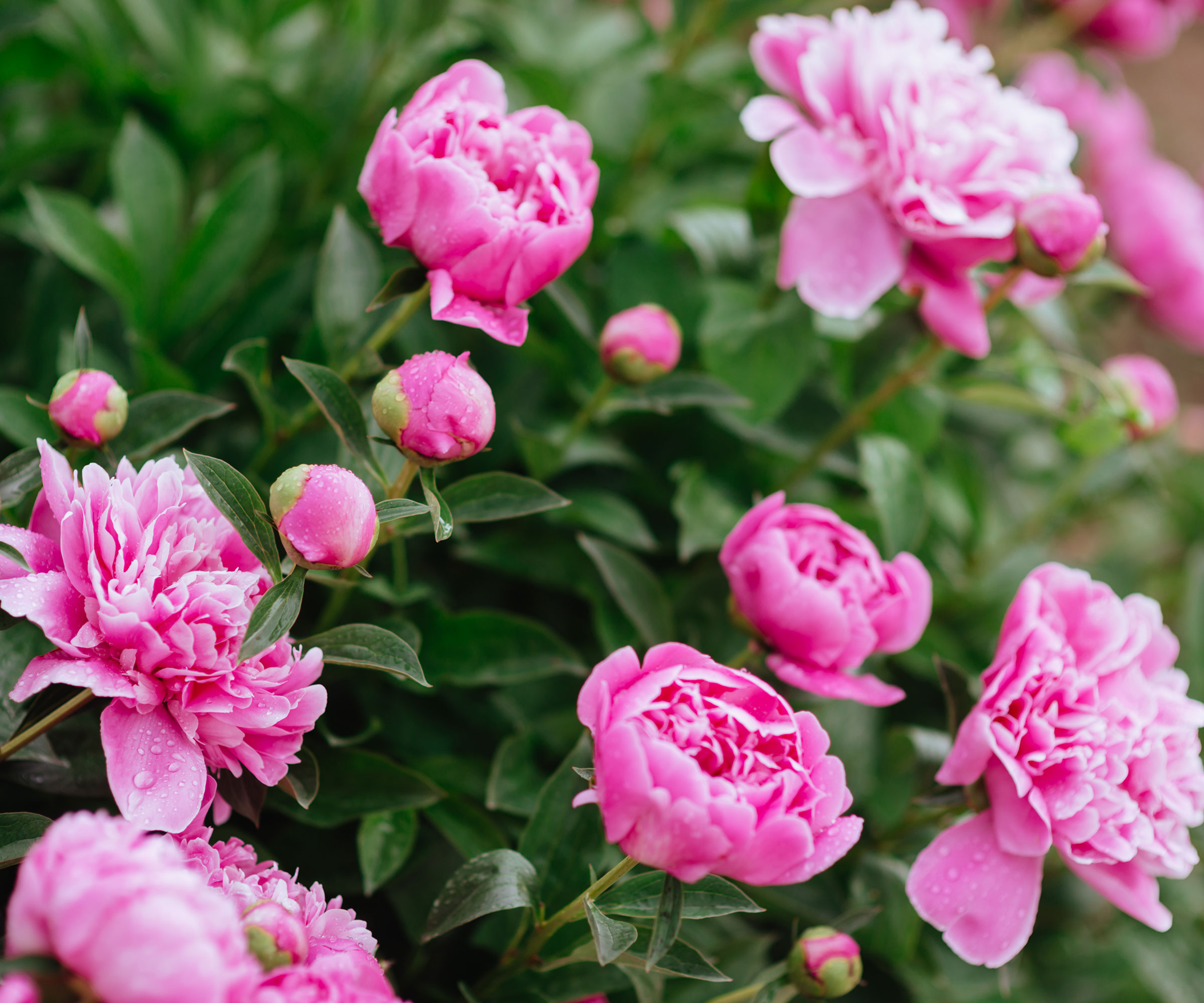
Old-fashioned perennials, peonies combine blowsy, bright blooms with lovely notched foliage. There are thousands of types of peonies available including those with single, double, and frilled flowers, and tree species. The colors are most often in the pink range, but they heat up to almost crimson and also come in white, lavender, and yellow. Leaves are pointed and divided into leaflets.
Peonies will arise new from winter’s cold embrace, pushing through the ground in coiled splendor as the new leaves take form. The flowers appear in early to mid-spring and last for weeks. Once planted, a peony can last for several generations.
They are hardy in USDA zones 3-7 and sometimes 8. Peonies need cold exposure for several months to form flowers, making them unsuitable for many southern gardens. Slugs and snails tend to stay away from these bushy plants and they are deer-resistant as well.
3. Ornamental Grasses
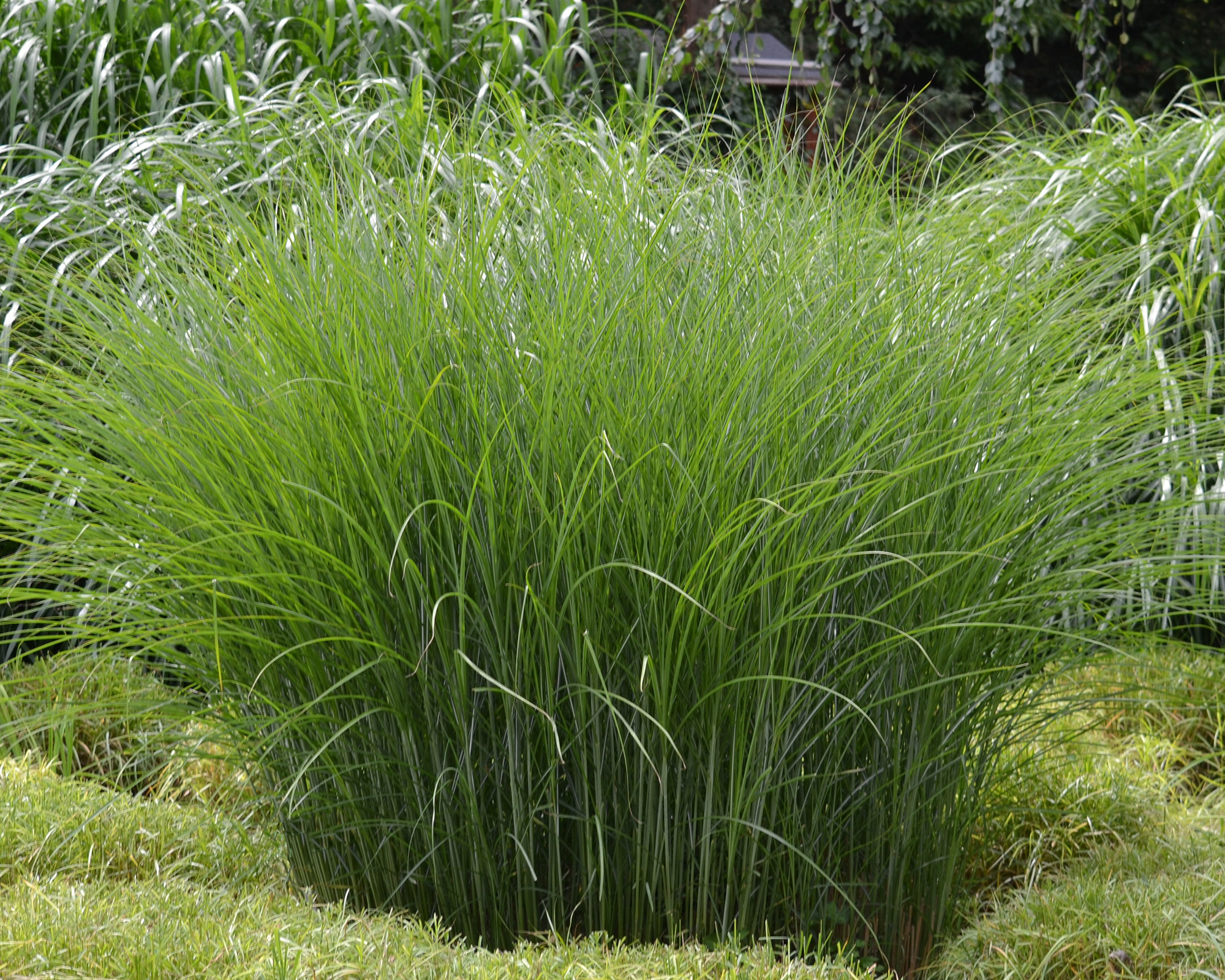
Ornamental grasses have risen in popularity over recent years. There are so many varieties from which to choose spanning little 1-foot (0.3m) clumps to giant 6-footers (1.8m). They also run the gamut on hardiness, where some species are hardy in USDA 4 while others love the warmer regions.
Maiden grass, pampas, sedge, and fountain grasses are just a few options. Some grasses are evergreen, providing year-round appeal. Most produce a feathery inflorescence that adds to the effect.
Slugs and snails don’t feed on your lawn and the same is true with the majority of ornamental grasses. There are varieties for shade or full sun, moist or dry soil, and a dazzling array of foliage hues.
4. Ferns

Ferns are very adaptable, hardy foliage plants that lend a forest feel to the garden. There are over 10,000 species of ferns in every size imaginable. Most are some shade of green but some, such as painted ferns, have with brightly colored ribs and almost bluish leaves. The leaves are slender and divided into many leaflets.
Many fern varieties are hardy in USDA zones 4-8, with a small selection hardy down to USDA 2. Slugs and snails eschew the airy foliage, and ferns are easy to grow with minimum maintenance.
Smaller species look lovely in groups, while the towering ferns make impactful centerpieces for the garden.
5. Bergenia
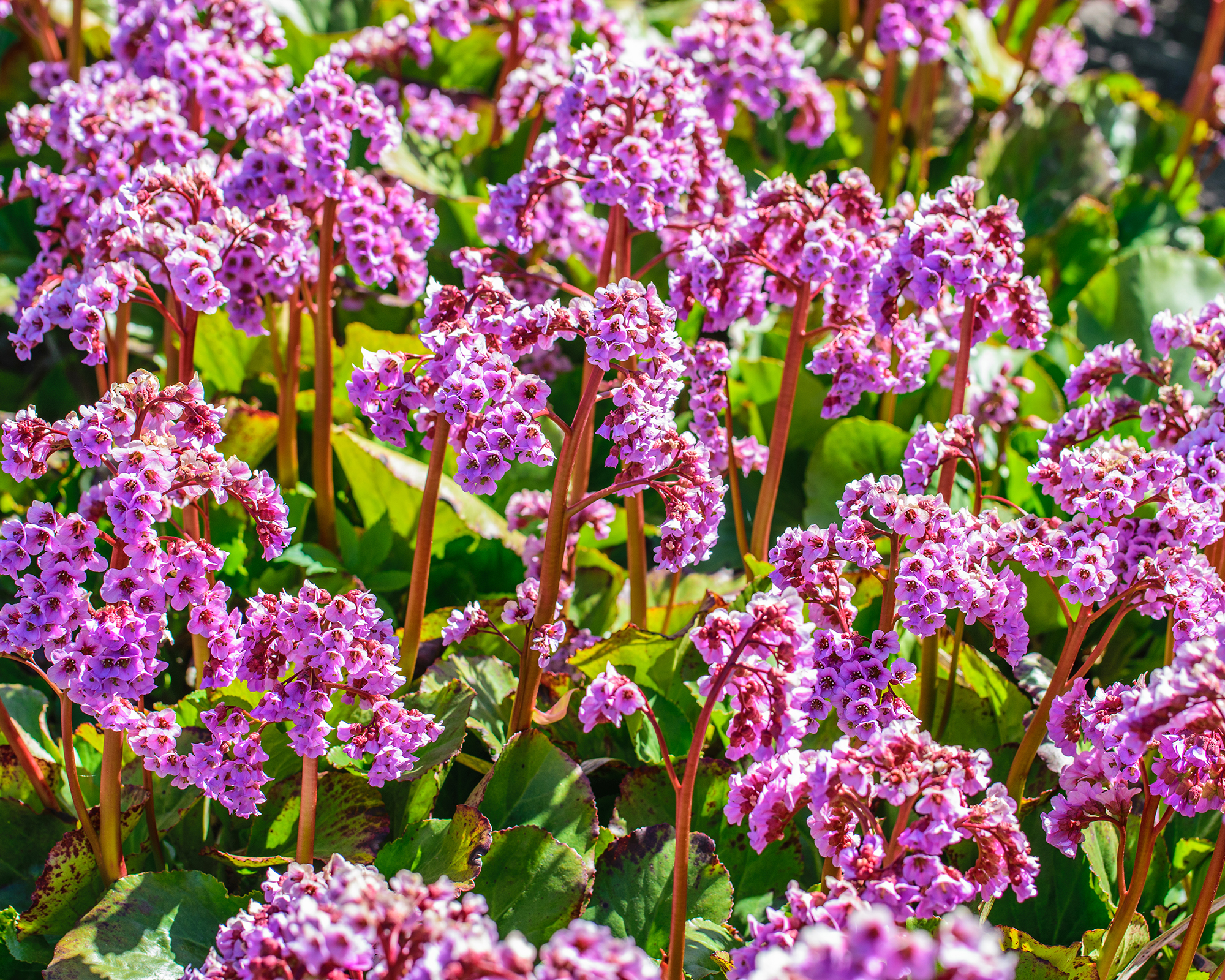
Thick, glossy, almost leathery leaves identify bergenia, often known as 'pig squeak' for the sound the leaves make when rubbed together.
A clumping perennial with attractive leaves and flowers, bergenia is a low-maintenance plant that adds winter color to the garden. In temperate regions, the foliage stays bright green through winter, but in colder climes, it bronzes up in fall before turning a deep burgundy.
Dark pink, red, or white flowers on tall, thick stems rise from the plant in spring. This plant is useful for the hard-to-populate shade-to-partial shade areas of the garden.
Suitable for zones 3-8, Bergenia is not only resistant to slugs and snails but also to deer and other pests.
6. Lamb’s Ear
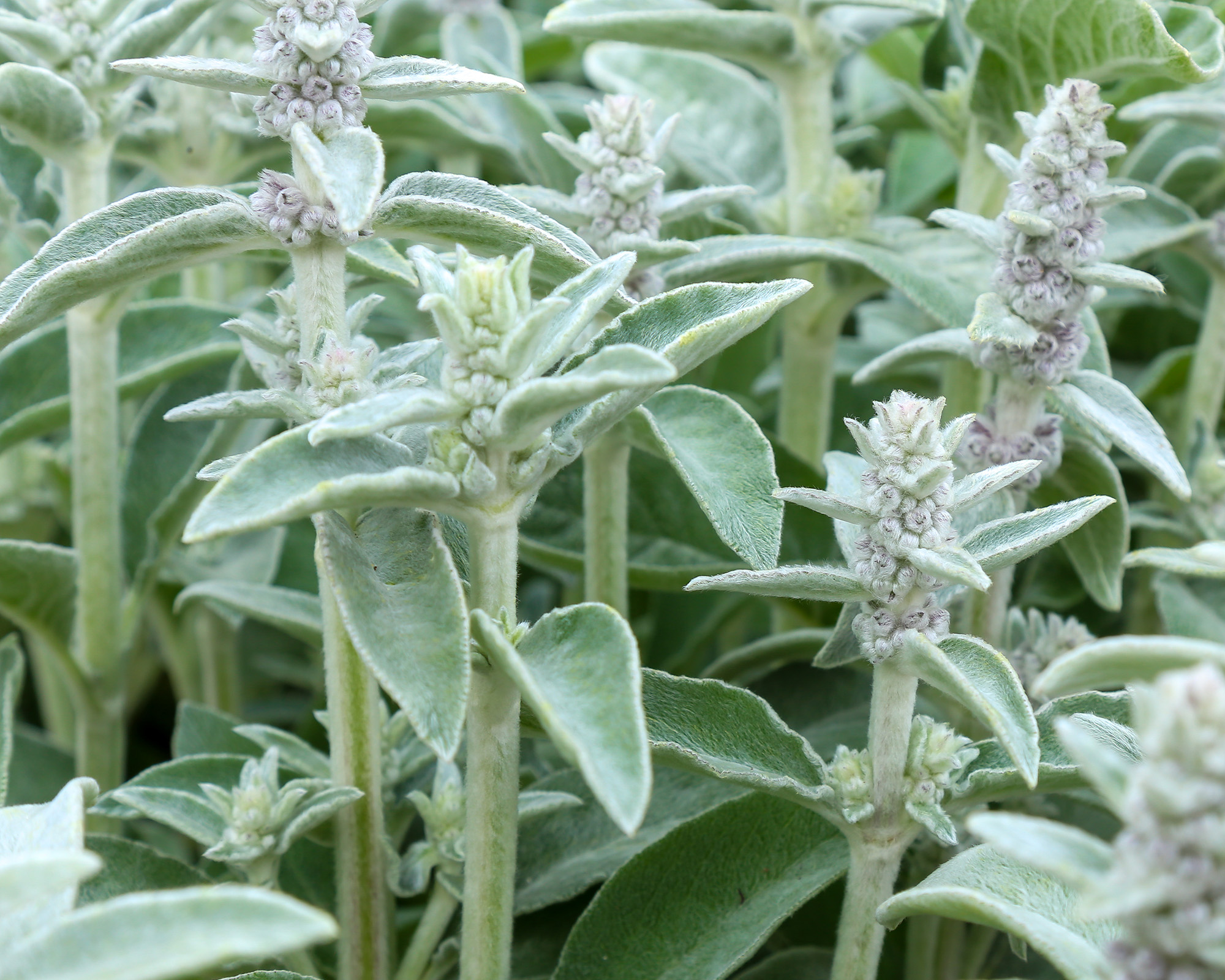
Lamb’s ear – or Stachys byzantina – is a softly furred foliage plant. It sports silvery gray leaves adorned with fine hairs that lead to the common name.
In the mint family, Stachys produces dense clusters of pretty, pointed leaves. The plant will spread over time as it roots from internodes on the stems. Its leaves set off flowering perennials and it is often used in sensory gardens due to the delightful texture.
Lamb’s ear is hardy in USDA zones 4-8. It is tolerant of most soil types and has moderate drought tolerance. One thing it won’t tolerate is slugs and snails, but fortunately, its rather pungent scent and textured leaves prevent it from being on the menu.
7. Hardy Geranium

Cranesbill is the common name for hardy geranium. This is due to the seed capsule resembling a crane's head and beak. Also known as wild geranium, it is a perennial plant that produces brightly colored flowers.
Usually grown for its vibrant pink, blue, or purple flowers, cranesbill also has attractive foliage that is palmate and deeply split. Its leaves are the first thing present in early spring. The plant forms a clump of dense foliage that will finally produce flowers later in the season.
These plants prefer moist soil in sun or shade. They are hardy to USDA 4-8 but will die back in winter in cooler regions. But don’t worry, cut off the spent foliage and they will rise like Lazarus in the spring.

Bonnie Grant is a professional landscaper with a Certification in Urban Gardening. She has been gardening and writing for 15 years. A former professional chef, she has a passion for edible landscaping.
-
 Terrifically Tubular Flowers For Hummingbirds: 9 Tube-Flowered Plants To Attract Hummers
Terrifically Tubular Flowers For Hummingbirds: 9 Tube-Flowered Plants To Attract HummersGrowing tubular flowers for hummingbirds helps you create the optimum feeding conditions for your winged friends. Here are nine tubed delights for hummers
By Tonya Barnett
-
 How To Grow Hydroponic Tomatoes For Fresh Indoor Harvests – No Soil Required
How To Grow Hydroponic Tomatoes For Fresh Indoor Harvests – No Soil RequiredLearning how to grow tomatoes in water is easy and allows you to harvest fresh-home-grown produce in every season without any mess.
By Ellen Wells